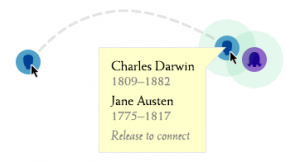In this post, I will discuss my experience in transcribing James Merrill Linn’s letter. My specific letter was Diary 60, which covered April 17th and the beginning of April 18th. I used the Preview and TextEdit apps side by side to transcribe. I would transcribe one line at a time and add a (\) whenever Linn finished a line, in which I would also start a new one to make sure I would not get lost.
One difficulty that I had in this assignment was obviously Linn’s handwriting. While I am not calling him a sloppy writer, handwritten work has surely changed since the 1860s. One specific instance where I was really challenged was in this screen shot. That word looks ille![]() gible to me, so I guessed the word “military.”
gible to me, so I guessed the word “military.”
A specific word that was always giving me trouble was the word “New Bern.” This was the name
![]() of a place Linn had been. I had no idea if this was a person, place, or thing until I searched it on the internet and found where Linn was talking about. Originally, I thought it had been “New Beme.”
of a place Linn had been. I had no idea if this was a person, place, or thing until I searched it on the internet and found where Linn was talking about. Originally, I thought it had been “New Beme.”
After discussing with my classmates and trying to find out the context of Linn’s situations, I found the transcribing process to be much easier. Discovering certain quirks in Linn’s handwriting also made the process much simpler.




